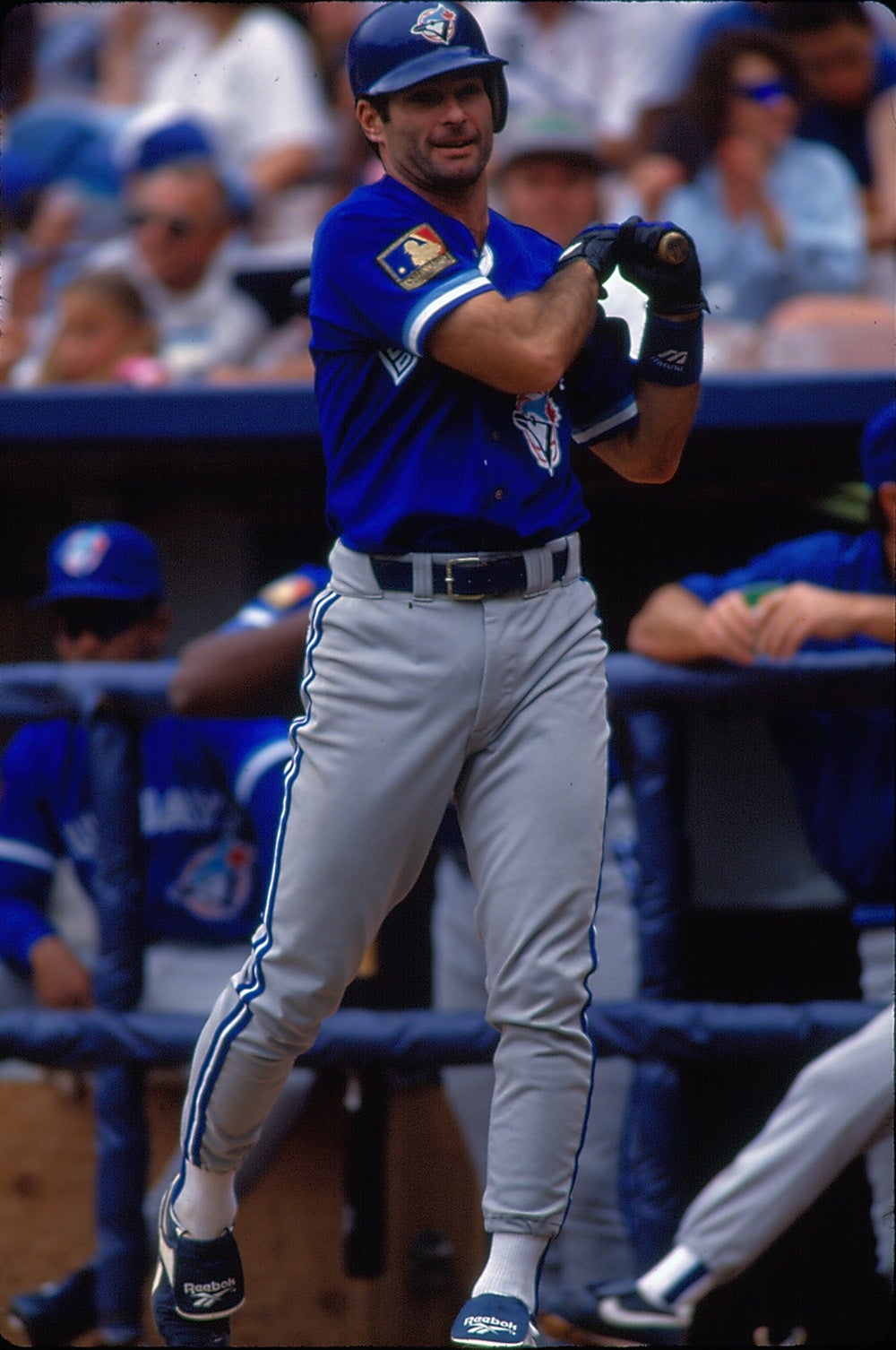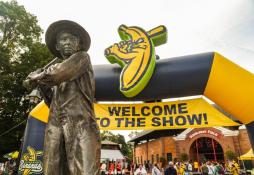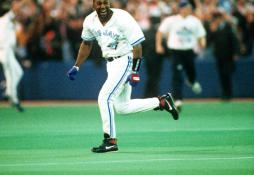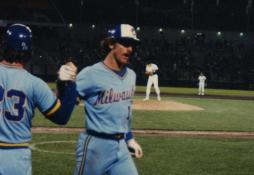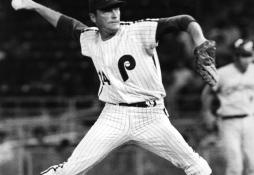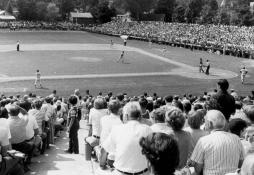#CardCorner: 1970 Topps Larry Hisle
From the tough streets of Portsmouth, Ohio, to the All-Star Game and the World Series, Larry Hisle never seemed to stop smiling.
His journey through baseball was anything but easy. But as one of the most well-liked players of his time, Hisle always seemed grateful for what life brought him.
“The key is the individual – how he feels,” Hisle told Knight-Ridder News Service in 1978 when he was atop the baseball world. “The big thing is pride.”
Born May 5, 1947, in the Ohio River town of Portsmouth, Hisle lost both his parents at an early age and was eventually adopted. He excelled in sports and found himself on youth baseball teams with future big leaguers like Al Oliver and Gene Tenace, who were both raised in the same area.
But Hisle’s best sport may have been basketball, where he was a two-time All-Ohio selection at Portsmouth High School and averaged 25.3 points per game as a senior.
“Larry was a great basketball player,” Tenace told the Associated Press in 1975. “A lot of people were really surprised when he signed a pro baseball contract.”
Hisle turned down more than scholarship offers to sign with the Phillies after he was selected in the second round of the inaugural MLB Draft in 1965 – but not before some high-profile folks like NBA star Oscar Robertson came calling.
“I remember the day the telephone rang at my house and a voice said: ‘I’m Oscar Robertson. Will you have dinner with me?’” Hisle told the Associated Press of Robertson’s attempts to recruit Hisle for the University of Cincinnati basketball team. “I almost dropped the telephone.
“But I wanted to play baseball more than I did basketball.”
Sent to Huron, S.D., of the Northern League in 1966, Hisle hit .433 in 21 games before spending his first full pro campaign in 1967 with Tidewater of the Class A Carolina League, where he hit. 302 with 23 homers, 78 RBI and 31 steals in 136 games. That was enough proof to the Phillies that Hisle was ready for the big leagues, and he was named their Opening Day center fielder in 1968.
Joining Hisle in the Phillies’ lineup on April 10, 1968, was another 20-year-old rookie, Don Money, who was stationed at shortstop.
“They’ve shown me this spring that they’re not ordinary 20-year-old kids,” Phillies manager Gene Mauch told the (Camden, N.J.) Courier-Post. “Who knows what they’ll do until it happens?”
But after starting three of Philadelphia first six games, Hisle returned to the bench and then was sent to Triple-A San Diego, where he hit .303 in 69 games before missing the second half of the season due to a bout with hepatitis.
In 1969, Hisle was once again the Phillies’ Opening Day center fielder, and this time he stuck around for the entire season – hitting .266 with 20 homers, 56 RBI and 18 steals in 145 games en route to a fourth-place finish in the NL Rookie of the Year voting, totals that could have been higher save for a fractured thumb that greatly limited Hisle in September. But Hisle also struck out 152 times – second-most in the NL behind Bobby Bonds – a figure that at the time was considered the mark of a poor hitter.
In 1970, things got worse as Hisle fanned 139 times in 126 games and hit just .205 with 10 homers and 44 RBI. His struggles continued in 1971 before the Phillies, looking for answers, sent him to Triple-A Eugene in late May. He returned to Philadelphia in September and finished the big league season with a .197 average in 36 games.
“That was the injury which really hurt the team,” Quilici told the AP following a season where the Twins went a disappointing 76-83. “(Hisle) was our offensive leader in many ways.”
Players throughout baseball were slow to sign 1976 contracts following the Andy Messersmith/Dave McNally arbitration ruling in December of 1975, and Hisle was no different – eventually agreeing to a one-year deal worth a reported $50,000 on May 17. He was hitting just .230 at the time but warmed up as the season progressed, finishing with a .272 batting average, 14 homers, 96 RBI and 31 steals – including a team-record four in one game against the Royals on June 30 as new manager Gene Mauch often gave his crew the green light on the bases.
“I was beginning to think the season might end before I would do something to help the club,” Hisle told the Minneapolis Star Tribune after his four-steal game.
He finished the year batting .290 with 34 home runs and 115 RBI, good for a third-place finish in the AL Most Valuable Player vote. It would be the peak of a career that was soon derailed by injury.
On April 20, 1979, Hisle was hitting .313 when a throw from the outfield against the Orioles damaged his rotator cuff. “(It felt) like someone had stuck a knife in my right shoulder,” Hisle said.
He remained in the lineup as the Brewers’ designated hitter for 11 games as the pain worsened, enduring a 1-for-18 stretch before going on the disabled list on May 4. He would appear in just two games – both in September – the rest of the season.
Milwaukee finished the year in second place in the AL East with a 95-66 record, with Hisle appearing in just 26 games.
“Hisle could have taken them just where they want to be,” Oakland pitcher Mike Norris told the Associated Press in September. “Even without him in the lineup, you can’t pitch around anybody.”
Eschewing rotator cuff surgery, which was thought by many to be the death knell for an MLB career, Hisle worked to strengthen his arm and reported to Spring Training in 1980 pain-free.
“Last year was the toughest thing I’ve had to go through in my whole life,” Hisle told the New York Times News Service. “I used to think my second year in the majors (when he hit .205 for the Phillies) tested me more. But last year, sitting out that way, was the worst.”
But for Hisle, the trials were just beginning. He began the 1980 season as the Brewers’ DH but was in constant pain. He batted .283 with six homers and 16 RBI in 17 games before being forced to the sidelines – and finally determined that surgery was the only possible answer, submitting to a procedure in late July by Dr. Frank Jobe.
The surgery attempted to repair the tear in his rotator cuff but was extremely invasive.
“They had to lift the deltoid muscle to get at the injured area and then they had to shave some bone and cut a couple of muscles,” Hisle told United Press International. “Finally, they had to reattach the muscles.”
Hisle did not play again during the 1980 campaign but returned as the Brewers’ Opening Day DH in 1981. He was hitting .235 in late May when the pain returned, and Hisle underwent another shoulder procedure to remove a bone spur on June 23 during the strike that interrupted the season. He returned for three games in September, marking the third straight season where he appeared in fewer than 30 contests.
Hisle appeared healthy in the spring of 1982, hitting .349 with five homers during the exhibition games. But an eye infection slowed him once the season began, and after hitting .129 through nine games Hisle was again forced onto the disabled list with shoulder pain.
“We don’t know if it’s a complete blowout or a strain, but all indications are it’s a recurrence,” Brewers manager Buck Rodgers told the AP.
Hisle explored all options that summer but rumor abounded that he would be forced to retire. Meanwhile, the Brewers won the AL pennant with a lineup known as “Harvey’s Wallbangers” in reference to new manager Harvey Kuenn, who replaced Rodgers midway through the season.
A healthy Hisle in a lineup with future Hall of Famers Paul Molitor, Ted Simmons and Robin Yount along with All-Stars like Cecil Cooper and Gorman Thomas might have been one of the most fearsome offenses of the decade.
“There’s been no change in the injury since it happened,” Hisle told UPI during the summer. “I still have a problem getting the arm over the shoulder. I have constant pain.”
In January of 1983, Hisle confirmed the inevitable and announced his retirement. He immediately joined the Brewers’ minor league coaching staff as a special instructor. After working for several organizations, Hisle became the Blue Jays hitting coach in 1992 and helped Toronto win the World Series.
After the season, Hisle had arthroscopic surgery on his right shoulder to reduce a chronic impingement and nearly died when two blood clots broke off during the operation. He recovered, however, to coach again in 1993, helping the Blue Jays win another championship as John Olerud, Molitor and Roberto Alomar set a modern record by finishing 1-2-3 in the AL batting race.
“I can’t be tested any more than what I’ve gone through,” Hisle told the Fort Worth Star-Telegram. “I looked at it as a test. I asked myself: ‘Larry, how will you react?’ That was the key.”
Hisle stayed with the Blue Jays as hitting coach through the 1995 season. As a player, Hisle hit .273 over his 14 years in the big leagues with 166 home runs and 128 stolen bases.
Few overcame as many obstacles or won as many friends along the way.
“No matter what they pay me,” Hisle said during his career, “whether it’s a dollar a game or $100 a game or $1,000 a game, I’m going to play as hard as I can.”
Craig Muder is the director of communications for the National Baseball Hall of Fame and Museum









